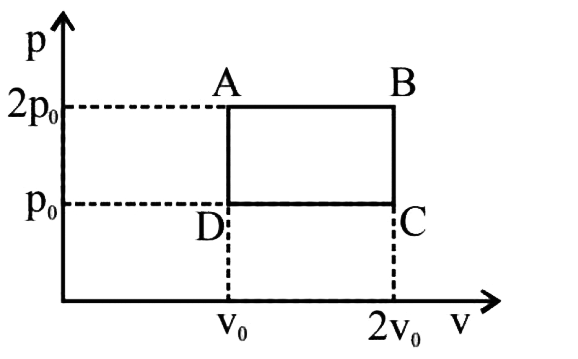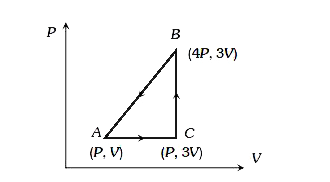
The above p-v diagram represents the thermodynamic cycle of an engine, operating with an ideal monoatomic gas. The amount of heat, extracted from the source in a single cycle is
p0v0
(132)P0v0
(112)P0v0
4P0v0
Step by step video & image solution for The above p-v diagram represents the thermodynamic cycle of an engine, operating with an ideal monoatomic gas. The amount of heat, extracted from the source in a single cycle is by Physics experts to help you in doubts & scoring excellent marks in Class 11 exams.
Updated on:21/07/2023Topper's Solved these Questions
Similar Questions
Knowledge Check

The above p-v diagram represents the thermodymic cycle of an engine, operating with an ideal monatomic gas. The amount of heat, extracted from the source in a single cycle isAp0v0B(132)p0v0C(112)p0v0D4p0v0The figure shows P - V diagram of a thermodynamic cycle

The work done in the cycle isA2P0V0B3P0V0CP0V0D6P0V0A sample of an ideal monoatomic gas is taken round the cycle ABCA as shown in the figure the work done during the cycle is
 AZeroB3PVC6PVD9PV
AZeroB3PVC6PVD9PV
550kJcycle−1 work is done by 1 mol of an ideal gas in a cyclic process. The amount of heat absorbed by the system in one cycle is
View SolutionThe work done by the system in a cyclic process involving one mole of an ideal monoatomic gas is −50kJ/cyc≤. The heat absorbed by the system per cycle is
View SolutionA Carnot engine working between K 300 and 600 K has work output of 800 J per cycle. What is amount of heat energy supplied to the engine from source per cycle
View SolutionA sample of ideal monoatomic gas is taken round the cycle ABCA as shown in the figure. The work done during the cycle is

View SolutionThe accompanying diagram represents a reversible cannot cycle for an ideal gas:

What is the entropy increase during isothermal at 1000K?
View Solution

